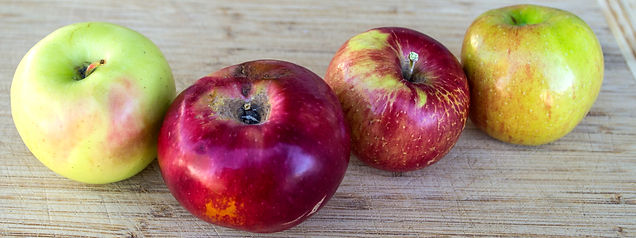


Classroom Activities
These are held in the Nevada Department of Forestry Field Office training room on Eastlake Boulevard in Washoe Valley. Typically these sessions are held once or twice a month in the evening from 5:30 - 7:30 pm. Classroom topics include scientific descriptions of tree anatomy, physiology, growth, and fruit production; The life cycle of common apple tree pests found in the Great Basin and IPM treatment methods; Pruners, ladders and other tools, their safe use and care, and safety concerns; Pruning techniques related to reducing tree height, increasing fruit production, and managing diseases or pests; Integrated Pest Management (IPM), and that methodology as applied to apple production.
For most volunteers the class room is where we begin to learn the practice of tree care and restoration, as a team, with each other.





Heritage Tree Sites
Are where volunteers have an opportunity to learn more about and to practice the horticultural concepts and methods presented in the class room. The sites provide opportunity for volunteers to see horticultural techniques and IPM methods applied to the trees. At the sites, volunteers learn how to recognize and apply Integrated Pest Management (IPM) methods that range from assessing the site's conditions and recognizing an aphid or codling moth infestation to releasing Lady Bird Beetles onto the site, and using cultural practices to support tree and site health, while helping to manage pest populations and disease.
These site visits are where the horticultural methods literally come to life for both the volunteers and the trees.
Cider Making
Is where the community members come together, from trees owners and volunteers, to neighbors, friends, and curious observers to benefit from the fruits of our labor. This is where we learn how the project has done, how the trees are doing, and what to expect from the harvest.
Making cider has several steps from washing and weighing the harvest, and checking for and removing unusable portions of apples, to grinding the fruit into must, before putting the must into the cider press, and slowly pressing the juice from it. Then comes the fun of pouring the fresh sweet cider into bottles for capping and pasteurizing, or freezing for storage.
Cider making is where we are reminded of the rich, sweet, and nourishing pleasure that only fresh pressed apple cider brings, as we enjoy it, together.
This project website, and all associated material, is supported in part by the Nevada State Department of Agriculture. Its contents are solely the responsibility of the authors and do not necessarily represent the official views of the Nevada State Department of Agriculture, Plant Division or the State of Nevada.
